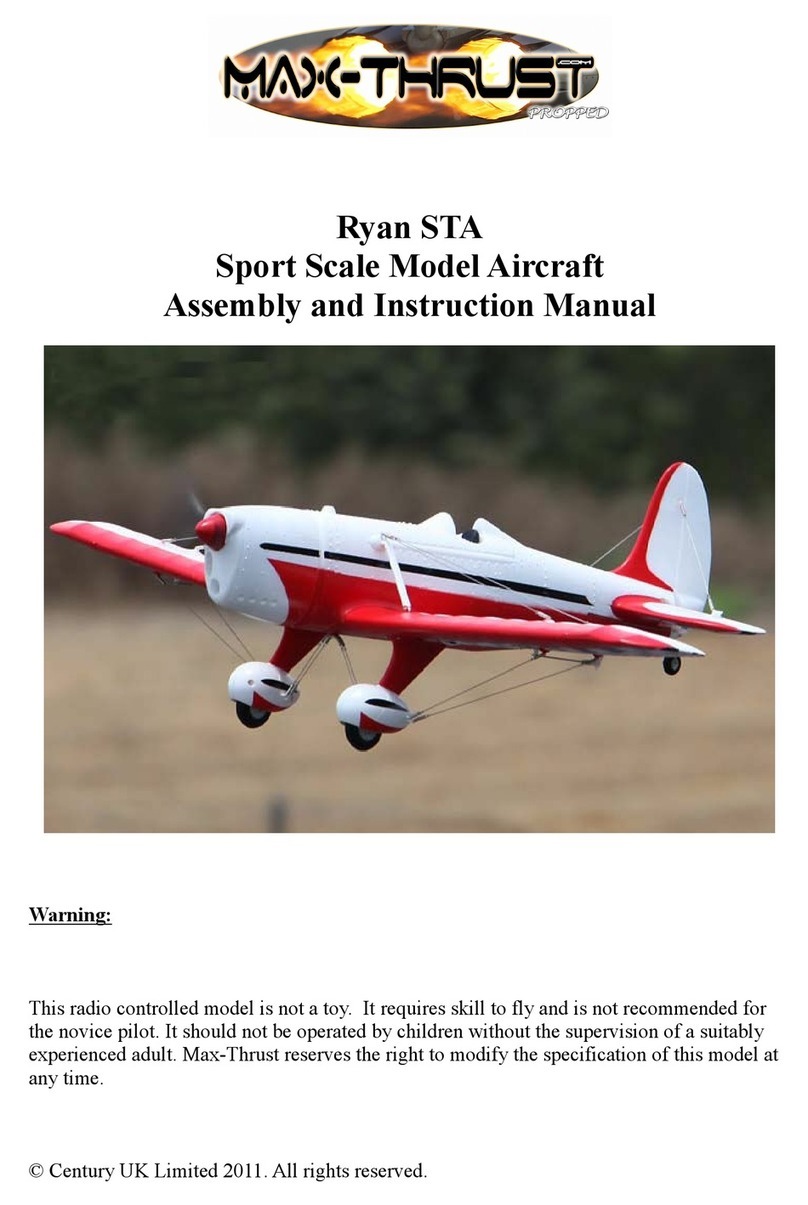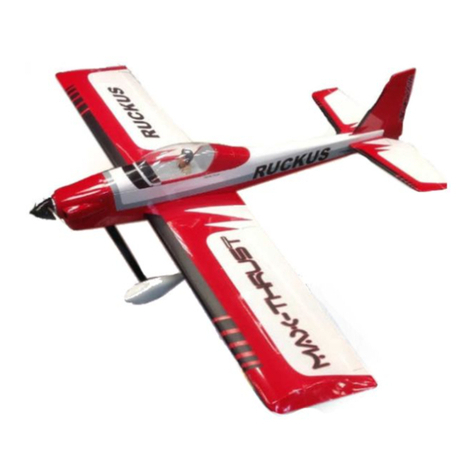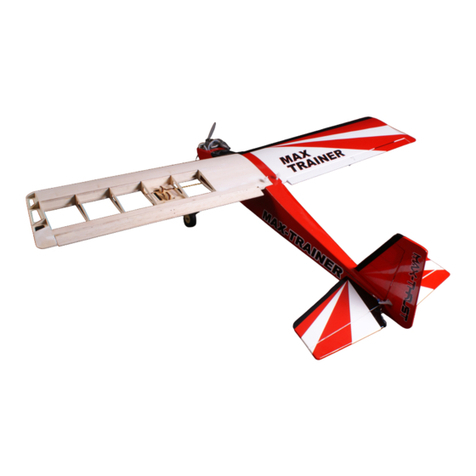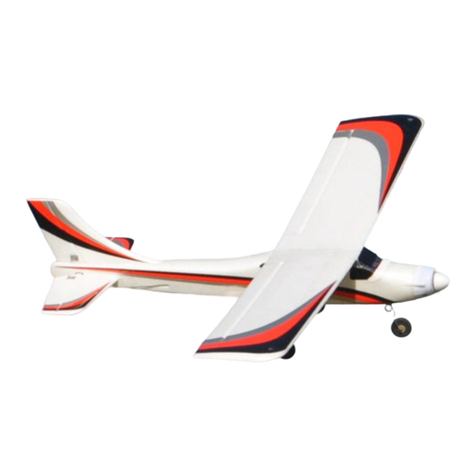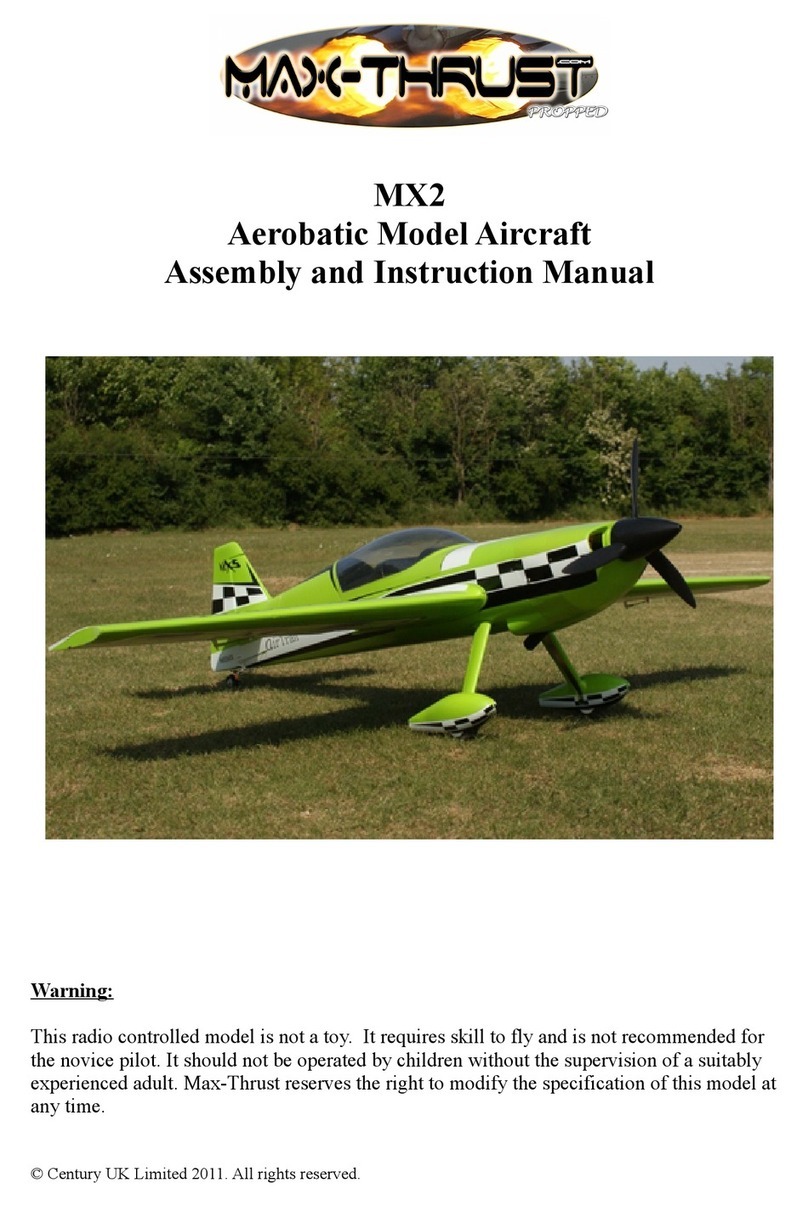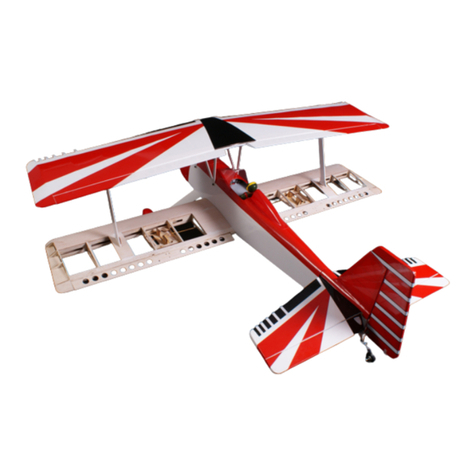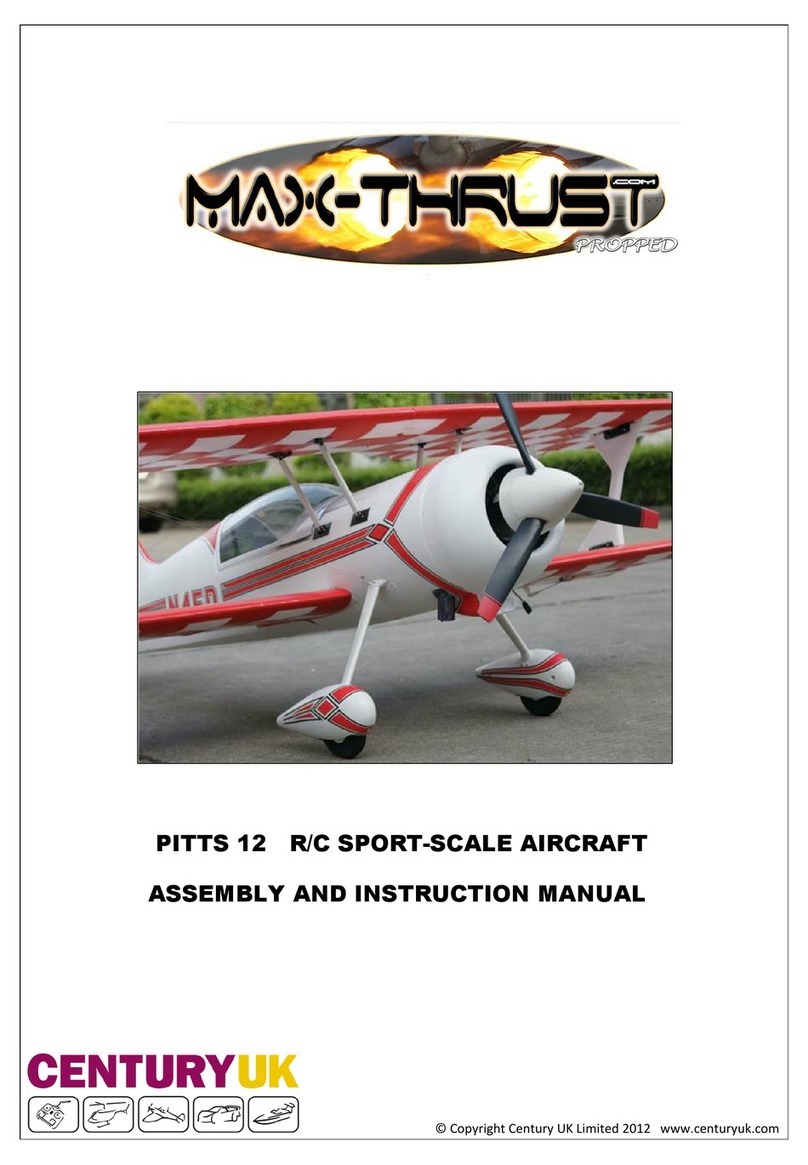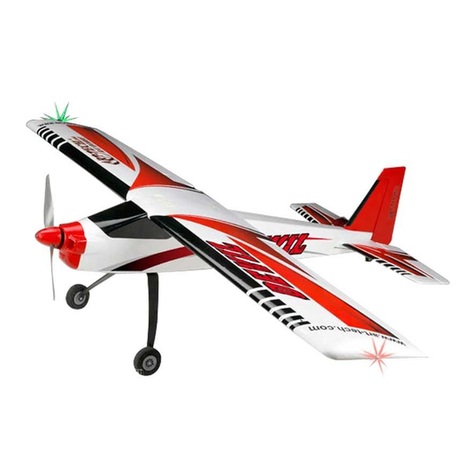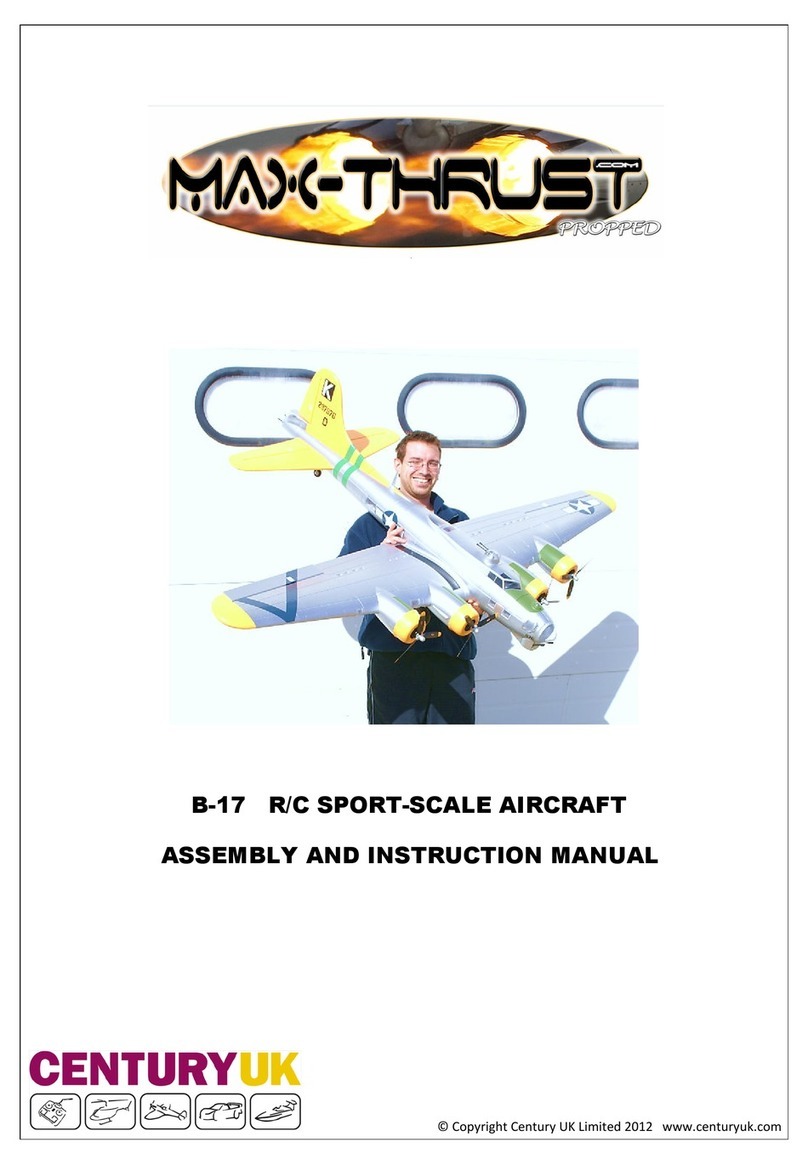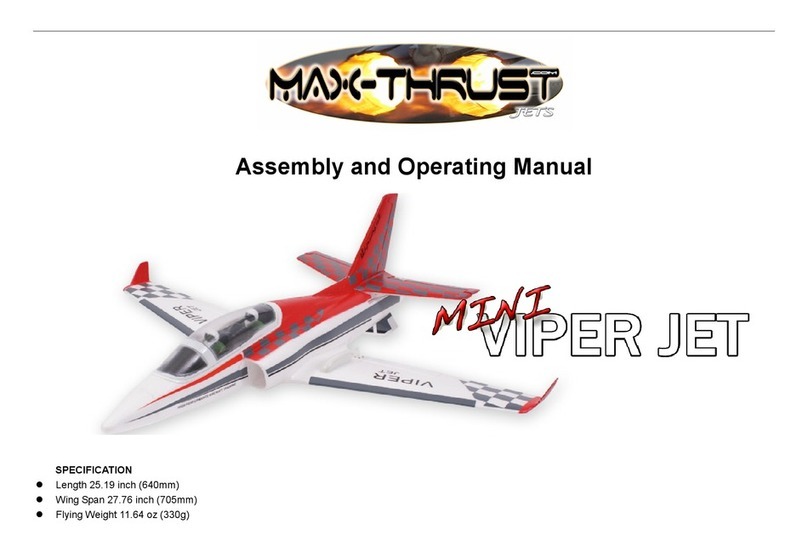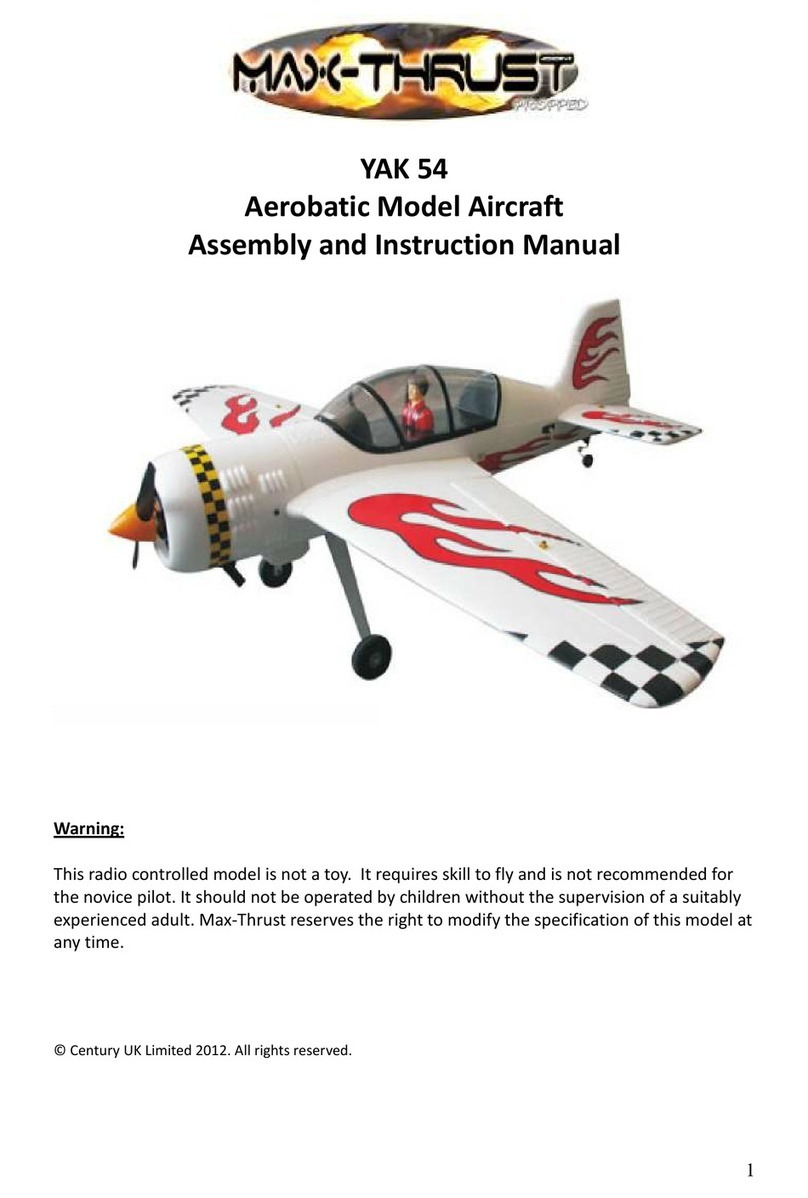6. Recei er Installation.
Note: We only recommend the use of 2.4GHz radio equipment with this model and make the
following recommendations for receiver location and mounting. These must be followed in
conjunction with the instructions supplied by your receiver manufacturer.
onnect the aileron, retracting gear and flap leads to corresponding outputs on your receiver.
Locate the leads from the ES , the control lead with only black and red wires should be
connected to the remaining black and red lead from the wing. This is the power supply to the
navigation lights.
The lead marked 3 is the throttle control and should be connected to the corresponding output
on your receiver. onnect the retracting tail wheel lead to the spare socket on the 'Y'-lead
marked 5. The remaining lead marked 6 is for the UBE system and should be connected to
any spare output on your receiver.
Please double check that all plugs are connected to
the correct outputs on your receiver and that all leads
are routed in a neat and tidy manner. Mount the
receiver in the position shown, (image 20) using your
choice of double sided self-adhesive or “Velcro” tape.
The ES will be held in place with the battery
retaining strap. Remove it from this position and
secure to the side of the fuselage with self-adhesive
“Velcro” tape.
20
7. Final Assembly
Fit the aluminium propeller adaptor to the motor
using the 4 x M2.5 x10mm cap head screws, (image
21). It is very important that these fixings are
tightened securely. Remove the propeller nut and
washer from the shaft. Slide the rear section (back
plate) of the spinner onto the shaft making certain
that the square “key” of the shaft locates into the
corresponding aperture in the back plate moulding.
21
Slide the propeller onto the shaft, followed by the
washer and secure in position with the propeller nut,
(image 22). The propeller nut needs to tightened
ery securely. Fit the spinner with the M3 x 45mm
screw. For optimum performance, some pilots may
wish to balance the propeller.
22
If you wish to install a pilot figure, do so now. We
recommend that you drill two small holes as shown
in the clear canopy to allow any heat to disperse,
(image 23).
8
23
